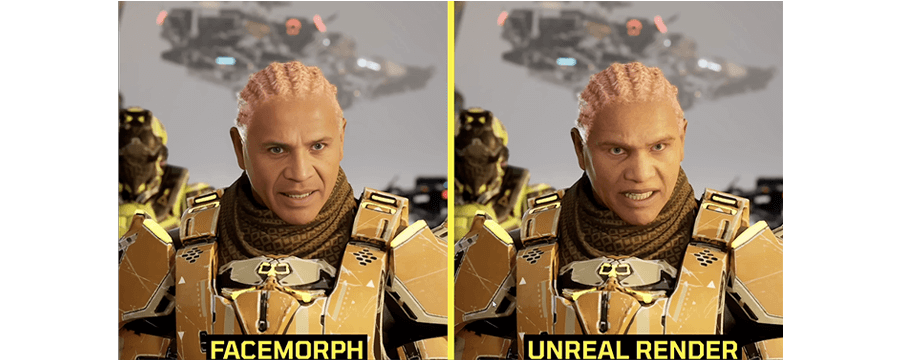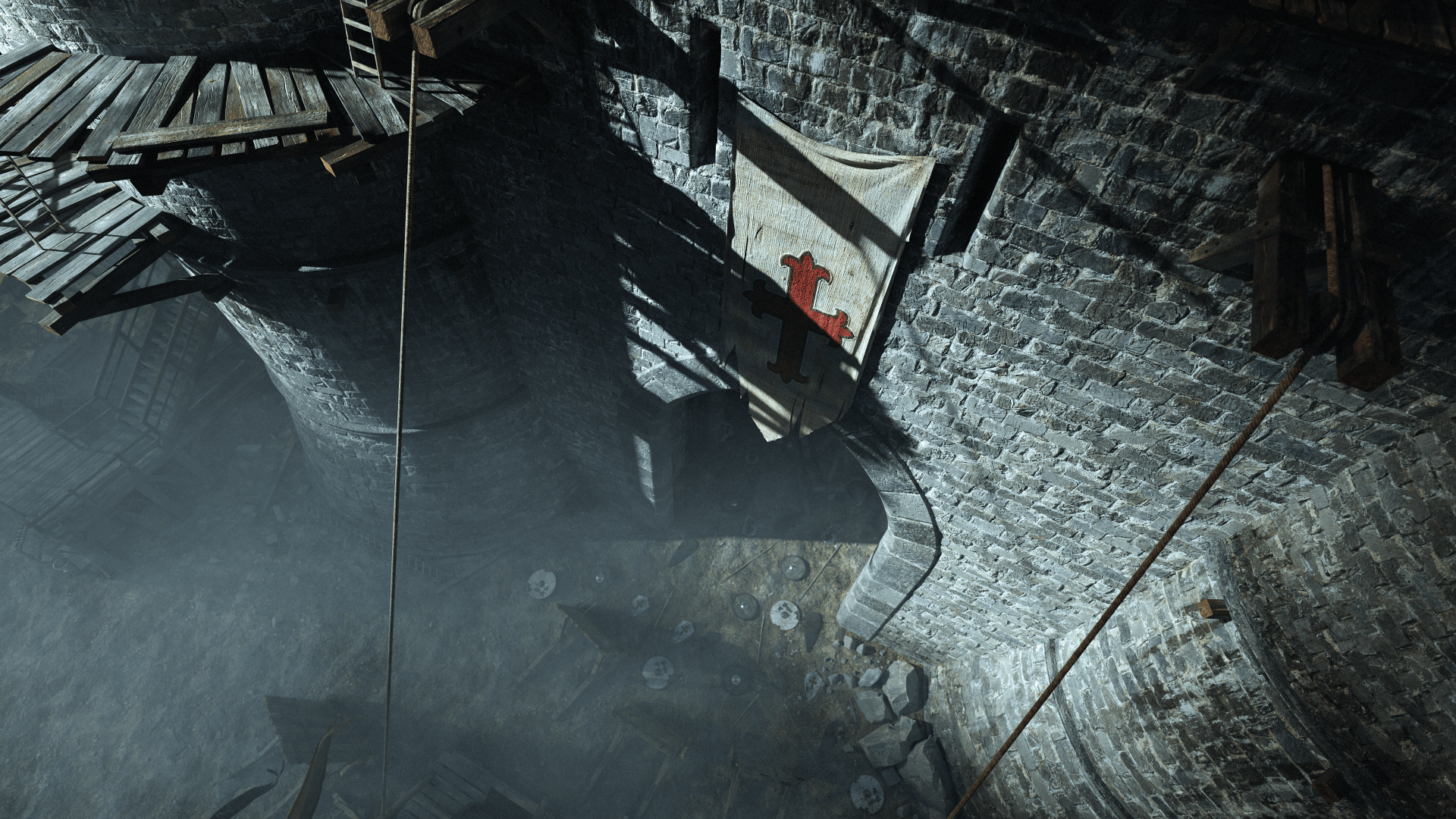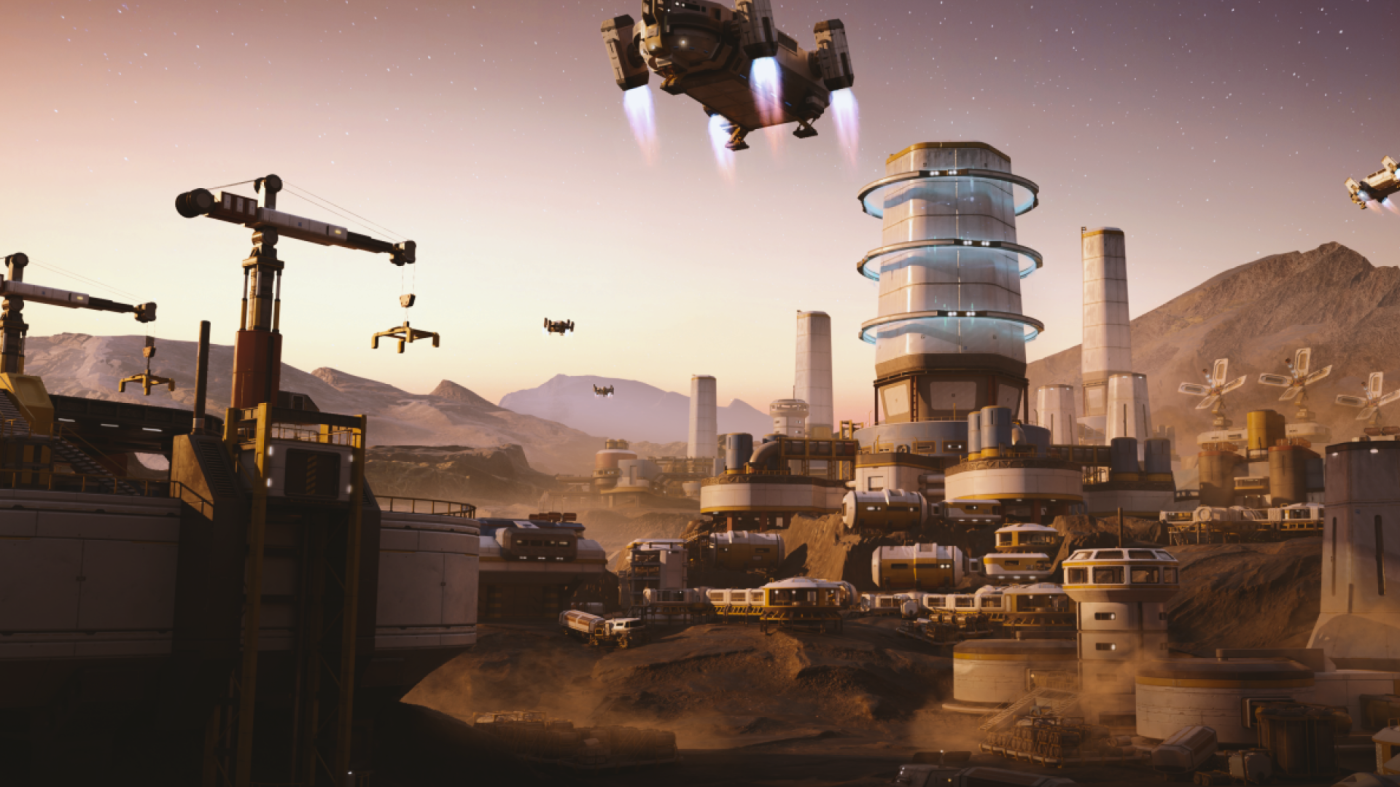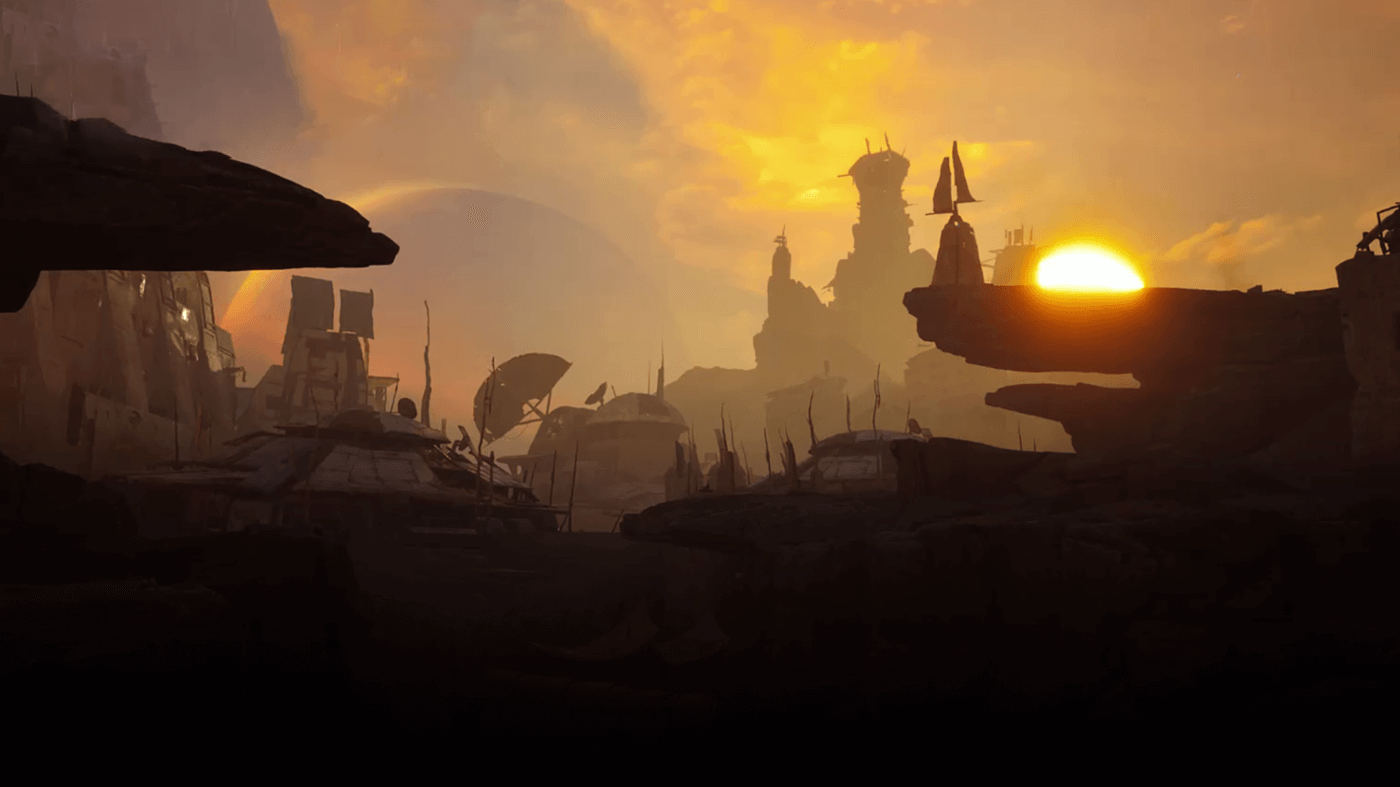If you’re one of the millions of people who laughed out loud at the World's Longest Lightsaber video, spit out your soda while watching New Robot Makes Soldiers Obsolete, or binged episodes of VFX Artists React, you already know the phenomenon that is Corridor Digital. With nearly 10 million subscribers and myriad high-quality, hilarious, and beautifully produced videos, Corridor is one of the most well-known and beloved VFX content creators on YouTube. And rightfully so.
Corridor Digital is a Los Angeles-based production studio known for creating viral short films inspired by pop culture and video games. In addition to making audiences cackle with joy, the team also posts behind-the-scenes content and filmmaking challenges featuring VFX and new technologies. Recently, the team has been using Cargo to bring their stories to life faster because speed and efficiency always matter.
We sat down to talk with Sam Gorski, co-founder of Corridor Digital, to get his perspective on filmmaking, the future of VFX, and their creative process.
KitBash3D: Thanks so much for taking the time to chat with us. We know there are a lot of Corridor fans in the KB3D community, and we’re excited to introduce some new ones to you, too! Right at the top here, could you give us a brief origin story for how Corridor got started and why you guys do what you do?
Sam Gorski: Niko Pueringer and I grew up and went to school together in Stillwater, MN. From a young age, we started making short films with our friends using whatever resources we could pull together. Once we discovered, through online forums, that VFX was achievable using a personal home computer, we knew making films / doing VFX was something we would pursue. We moved to Los Angeles, doing freelance VFX and earning what we could to fund our own projects. Then YouTube hit the scene, enabling us to release projects on our own terms. Later, our childhood friend Jake Watson joined as our business partner, and we grew into what Corridor Digital is known as today.
KB3D: That’s awesome. How do you differentiate the Corridor Digital and Corridor Crew channels?
Sam: Corridor is the original channel that broke out the Corridor Digital name by becoming the go-to place for viral videos inspired by video games with top-tier independent VFX. Corridor Crew, formerly known as the Sam & Niko channel, was a way to explore the behind-the-scenes process of the Corridor shorts. Over the years, changes in the YouTube landscape allowed Corridor Crew to become a standalone channel in its own right, hosting formats like render challenges and the popular series “VFX Artist React to Bad & Great CGI.”
KB3D: Your channels have been among YouTube's most influential VFX and game content channels for a decade. What are some of the biggest changes you’ve experienced as you've grown into this space?
Sam: Just finding our voice within the YouTube algorithm. YouTube no longer enables or supports viral videos and short-form content like it did when the original Corridor channel was first breaking out. Luckily, we’ve always been able to adapt and move with the changes. For example, evolving the Sam & Niko channel into the Corridor Crew channel. That was the next, most natural, step.
KB3D: That makes sense. So, what will be your main focus over the next year?
Sam: Original content. We’d like to go back to our origins and use the success of the Corridor Crew channel and the help of CorridorDigital.com subscribers to create original content and tell original stories. With new VFX tools and software more suited to independent creators at our fingertips, the possibility of telling our stories with amazing visuals and producing them efficiently has never been more achievable.
KB3D: Can you share which VFX tools and software are some of your favorites as independent creators?
Sam: Oh boy, there’s a lot. But I’m a big fan of tools that streamline. We made the leap to Resolve a few years back and it’s been amazing. Polycam is my go-to for scanning. Rokoko video is surprisingly useful and fast in a pinch. AccuRig from Reallusion (sorry Mixamo!), and of course… Unreal! After all these free years, I’ll pay for it next year when they finally start charging for filmmaking versions of it. *cries softly*
KB3D: Walk us through a little of the team’s pre-production process. How do you decide what videos to make next?
Sam: We have multiple weekly brainstorming sessions to build a list of ideas. We then move into whatever idea is most achievable quickly. We also split our creators into groups so we can produce multiple ideas at a time. That’s all on top of a weekly React schedule, a standalone Crew video, and multiple exclusive releases on CorridorDigital.com.
KB3D: In your video “It Took 3 Years to Bring Him to Life,” you mentioned you loved working with Cargo (which we loved hearing, by the way!) How does Cargo integrate into your creative process, and how has it improved production?
Sam: Filmmaking in Unreal Engine is like playing with action figures and using Cargo is like having the biggest toy chest. Being able to reach in and grab any model makes environment design fun! Without Cargo, a quick environment was usually limited to natural landscapes or prefab scenes. But now we can create custom, flexible environments at light speed.
KB3D: Love that–it was clear in that behind-the-scenes video how you were able to assemble your Starfield environment using the Future Warfare Kit. Looking ahead, are there any specific types of projects or ideas where you see Cargo playing a significant role? What potential do you see in Cargo for future creative explorations?
Sam: Sitting down and designing an environment is always the most fun part of virtual filmmaking for me. Getting to be a virtual set designer and imagining the space and world is pure joy. Cargo feels like it will have a place in any project moving forward. It feels like there are so few tools out there that can do what it does.
Cargo in action.
KB3D: In the wake of the strike that put so much on hold in traditional Hollywood this year, a ton of new small teams are popping up using these new tools to create incredible work at lightning speeds. What advice would you give small teams getting started today?
Sam: Know your audience and focus on the big things! Ultimately we’re all artists here, and you can’t sweat the small stuff. Cut every corner you can until people start noticing. And often times the right version of software is the free one.
KB3D: That's great advice for makers of all stripes, really. Sam, you led the charge of getting Unreal Engine into your workflows at Corridor. Real-time rendering is playing a huge role for so many creators, from individuals and small teams to the largest studios in the world. Where do you see the future of VFX heading, and what emerging trends or technologies are you most excited about?
Sam: I’d like to say AI, but it feels like its true purpose for VFX will actually be in the background or taking smaller roles rather than filling the frame. As for the future…well, there will never be a lack of desire to put yourself in another world or give yourself superpowers. VFX, whether it is rendered or in real-time, will always have its place and will always be directed by a human hand.
KB3D: That makes a lot of sense. Let’s talk more about that human factor for a second. Crossing the uncanny valley into photorealism is the dream of much 3D content. But when making “If Starfield NPCs Were Brutally Honest,” you decided against “realism” in favor of effects with more emotional impact. Can you talk about how technology might actually interfere with a project's success rather than ignite it?
Sam: Firstly, we always have an ace up our sleeve…one that says, “It’s supposed to look like a video game!” Games, as a core inspiration for our videos, have always had our backs! This video was a great lesson in not worrying about CGI or graphics, or realism for that matter. Art is all about expressiveness and emotion, and I’m convinced you could make a story about a cube and a sphere that will make you cry. When you’re going to make a narrative, you’re faking it from the start. Lines are scripted, costumes are made…Nothing is “real”. There is a lot of leeway you still have when not everything is “realistic.” It’s just about making sure whatever emotion / setting you’re trying to convey matches up with what you’re watching. Cartoons, anyone?!
KB3D: Definitely. And the follow-up video you recently posted, Flirting from the NPC's Perspective, really nailed the awkwardness you were playing with to hilarious effect. Given what you learned making the first video, did you do anything different this time around?
Sam: Firstly, it’s tough to act and direct at the same time, especially when there’s not even a camera to play back from. So rather than focus on perfect line delivery, we just tried to make the scenes as dynamic and “human” as possible by interrupting and intentionally throwing off each other’s performances. Having that aspect shine through with the mocap really brings the digital characters to life in a way you’re not used to seeing. From a technical standpoint, ingesting the massive amount of face and body capture is pretty tough, and because of the huge volume of cleanup needed, you have to choose your battles wisely. Thankfully janky motion is a tenet of Starfield’s gameplay. *winks playfully*
KB3D: So, what’s an absolute dream project, or who would you collaborate with if you could make a project with anyone on earth?
Sam: Naturally, being able to invite James Cameron to the React Show would be amazing. But all our dream projects are just being able to make stories longer than 10 or 15 minutes. The online ecosystem really values low-cost-per-minute content that’s short, so any time we get to tell a story over 10, 20, or 30 minutes, it’s a dream. Even Son of a Dungeon, our D&D show, was that kind of dream. Nine hours of narrative content?! So rewarding.
KB3D: That show is so entertaining for us as viewers–we can only imagine what it was like for you to see that dream come true! Given your commitment to innovation while still having fun, what future projects can we expect from Corridor Digital? How do you plan to continue pushing the boundaries of VFX and digital storytelling?
Sam: Well, it’s not totally up to us sometimes. We wait for those perfect intersections where technology and society give us a video idea we can’t pass up. But these days, it’s all motion control and mocap over here! We’ll see what comes out of that!
Thanks so much to Sam and the entire Corridor Digital team for providing their thoughts and perspectives with us. As pioneers in digital filmmaking and visual effects, Corridor continues to inspire creators and viewers alike with innovative, entertaining content. We’re excited to see what viral sensations and original narratives the team dreams up next!
Stay tuned for much more magic as this talented crew continues to create and evolve. You can subscribe to Corridor Digital and Corridor Crew on YouTube and sign up for exclusive content at CorridorDigital.com.




